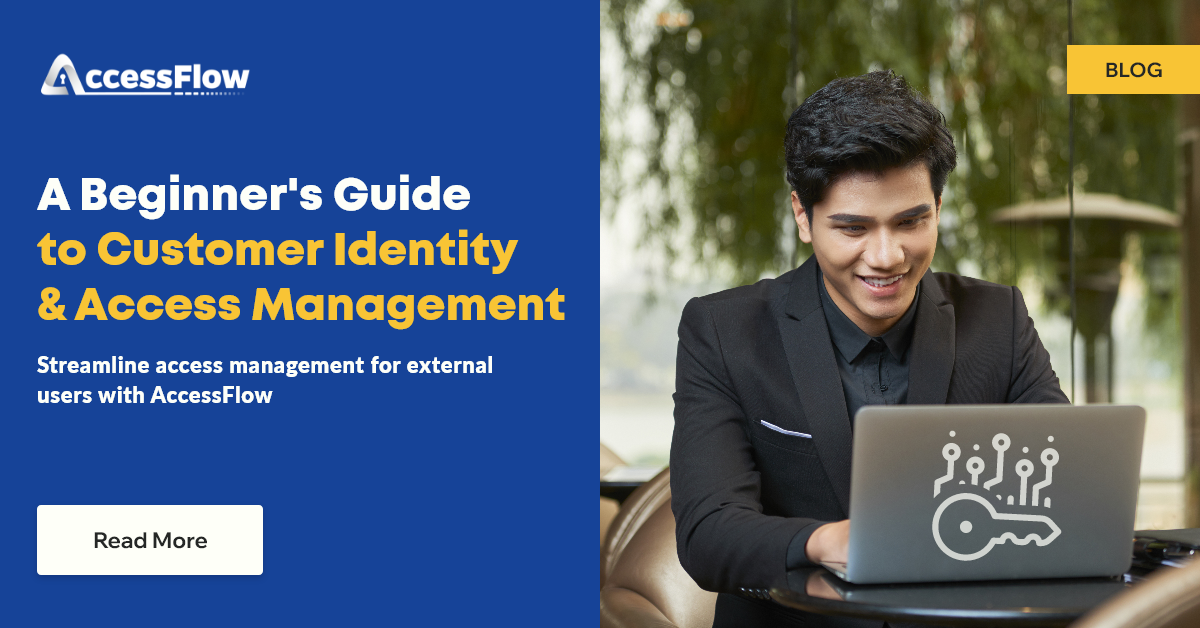
With external enterprise users involved in conducting digital transactions and exchanging sensitive personal information, it is crucial for organizations to safeguard external user identities and data from cybercriminals. Given that 53% of customers prioritize digital services of companies that safeguard their data, securing customer data and access management becomes even more vital. At the same time, organizations must deliver a seamless experience to customers across all platforms to gain their trust and loyalty. This is where Customer Identity and Access Management (CIAM) becomes crucial. It unlocks the dual benefit of securing external user identities while ensuring a seamless customer experience. Modern access management and governance solutions equipped with CIAM capabilities can help organizations streamline access management for external users.
AccessFlow, natively built on the robust ServiceNow platform, is one such modern access management and governance solution that empowers organizations to effortlessly manage access for external users, including business partners, vendors, and contractors, from a unified portal. But before we dig deeper into how AccessFlow streamlines access management for external users, let’s first understand:
Customer Identity and Access Management (CIAM) focuses on managing external user identities and controlling their access to enterprise systems. CIAM tools are designed to deliver a secure, seamless, and uninterrupted experience to your customers, regardless of the enterprise application or platform they use, while ensuring top-notch customer data security. CIAM empowers organizations to meet the evolving access needs of external users and maintain compliance with data privacy regulations.
Broadly, CIAM is categorized into two categories:
B2B CIAM: It involves securing and managing access for business partners, vendors, and contractors who routinely interact and exchange sensitive data with your organization. Given that business partners and vendors are involved in highly sensitive financial transactions, they are prime targets of cybercriminals. Hence, you must invest in access management solutions with robust B2B CIAM capabilities for improved external user access management.
B2C CIAM: Instead of business partners, B2C CIAM tools focus on protecting and managing consumer identities and delivering them a seamless multi-channel experience. They track user journeys across various customer-facing applications and apply behavior analytics to help enterprises drive more engagement and conversions.
Now, that we’ve understood the CIAM concept, let’s understand how it differs from identity and access management:
| Comparison Points | CIAM | IAM |
|---|---|---|
| Identity Management | It focuses on managing external identities like business partners, vendors, contractors, and customers. | It focuses on internal or employee identities. |
| Authentication | Multiple authentication methods like social login and passwordless authentication. | Strict internal authentication via enterprise directories. |
| User Experience | It requires a more intuitive UI and ease-to-use features with minimal technical complexity. | The UI must meet the organizational standards of user-friendly product with minimal training needs. |
| Data Privacy and Security | Customer data is generally used for marketing, business compliance, and strategy planning with prior consent from the customer. | Employee data is used for internal purposes like streamlining access management. |
| Scalability | CIAM tools require more scalability as they are designed to manage a large external user base. | IAM tools manage internal users in organizations with predictable growth. Hence scalability is not a major concern. |
In a nutshell, securing external enterprise identities and access is vital for organizations to improve customer data safety and prevent the risk of cyberattacks. A modern, automated, and unified solution like AccessFlow can empower enterprises to streamline their external user access management journey. Being a SOC 1 Type 2 compliant solution, it not only effortlessly manages access for business partners and vendors but also ensures a seamless customer experience with powerful self-service and reporting capabilities.
To know more about AccessFlow and how it transforms customer access management and experience, contact us at information@alcortech.com
 Back to Blog
Back to Blog